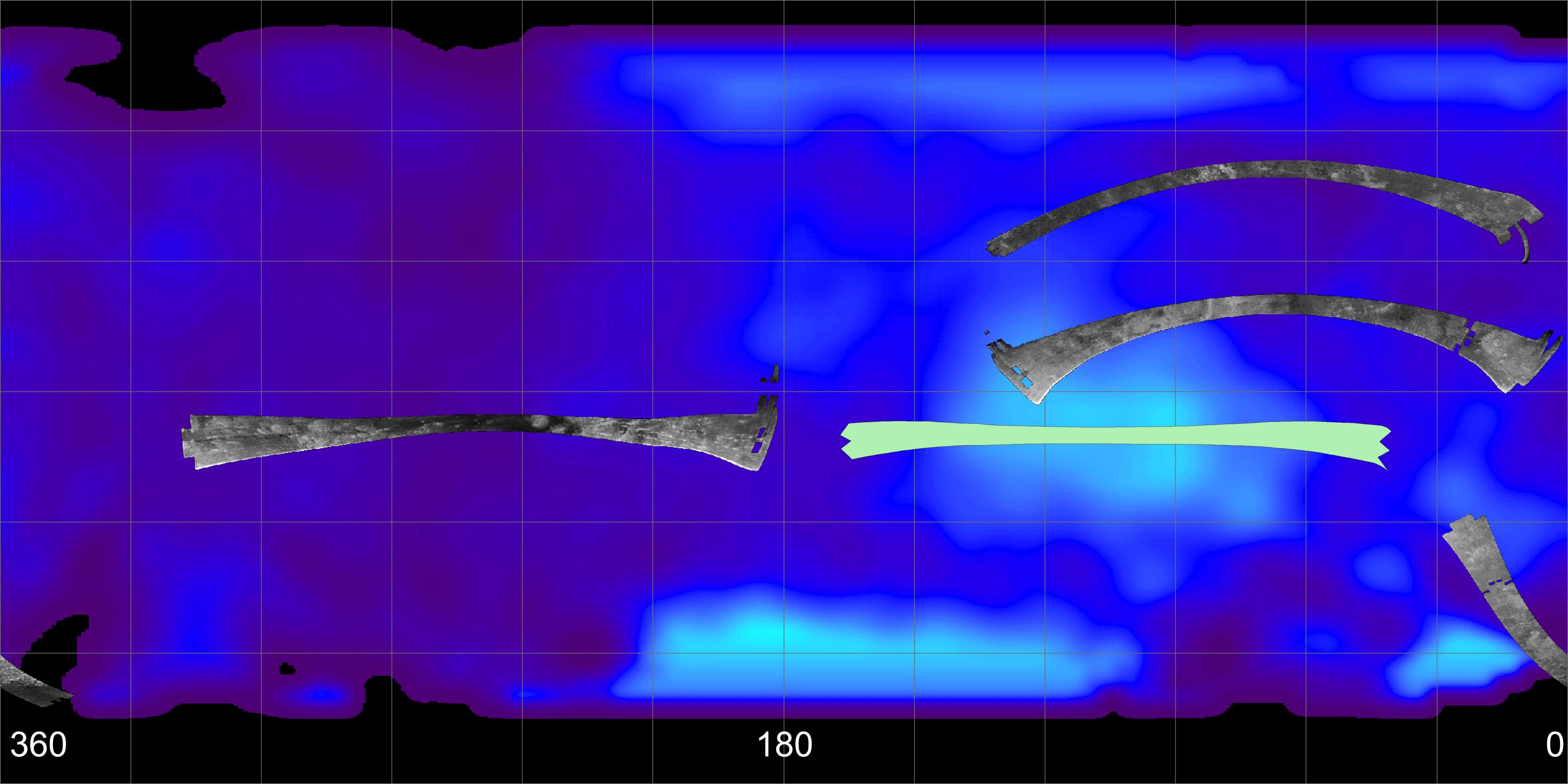Titan (T13) Viewed by Cassini’s Radar Flat Map

| PIA Number | PIA08100 |
|---|---|
| Language |
|
This map of Saturn's moon Titan shows the location of the upcoming April 30, 2006, Titan flyby and the areas mapped so far by the Cassini radar mapper using its synthetic aperture radar imaging mode.
Longitudes are labeled at the bottom of the map. The radar swaths are superimposed on a false-color image made from observations by NASA's Hubble Space Telescope.
The swath shown in light green represents the area to be imaged in the upcoming April 30 flyby. It will go right across an optically bright region of Titan known as Xanadu. See Titan (T13) Viewed by Cassini's Radar for another view of this pass, or Flat Map (annotated) version.
The far left image shows the location of the radar swath for the Oct. 28, 2005, flyby. On the top right is the radar swath from the first Titan flyby, on Oct. 26, 2004. The second from the top image is from the second radar pass of Titan, on Feb. 15, 2005 (near-equatorial). The bottom right swath is from the Sept. 7, 2005, flyby.
Cassini's radar has revealed a variety of geologic features, including impact craters, wind-blown deposits, channels and cryovolcanic features.
The Cassini-Huygens mission is a cooperative project of NASA, the European Space Agency and the Italian Space Agency. The Jet Propulsion Laboratory, a division of the California Institute of Technology in Pasadena, manages the mission for NASA's Science Mission Directorate, Washington, D.C. The Cassini orbiter was designed, developed and assembled at JPL. The radar instrument was built by JPL and the Italian Space Agency, working with team members from the United States and several European countries.
For more information about the Cassini-Huygens mission visit http://saturn.jpl.nasa.gov .
Credit: NASA/JPL
